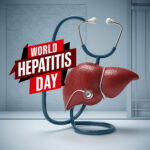
World Lung Cancer Day: Understanding the Challenges and Finding Solutions
World Lung Cancer Day, observed annually on August 1st, is a day dedicated to raising awareness about lung cancer, the leading cause of cancer deaths worldwide. This day serves as a reminder of the significant challenges faced by those affected by this disease and emphasises the need for continued research, support, and preventive measures.
In this article, we will delve into the problem statements, reality checks, and actual struggles associated with lung cancer, followed by solutions and preventive strategies.
Problem Statements
- High Mortality Rate: Lung cancer is responsible for approximately 1.8 million deaths globally each year. The high mortality rate is primarily due to late-stage diagnosis, which limits treatment options.
- Stigma and Misconceptions: There is a pervasive stigma associated with lung cancer, often linked to smoking. This stigma can lead to delays in seeking medical help and reduced support for patients.
- Lack of Awareness: Many people are unaware of the early signs and symptoms of lung cancer, leading to late diagnoses. Additionally, awareness about the importance of early screening is limited.
- Limited Access to Care: Access to advanced diagnostic tools and treatments is often limited, especially in low-income and rural areas. This disparity contributes to higher mortality rates in these regions.
- Financial Burden: The cost of lung cancer treatment can be prohibitive, leading to significant financial strain on patients and their families.
Reality Checks
- Not Just a Smoker’s Disease: While smoking is a major risk factor, non-smokers can also develop lung cancer. Factors such as exposure to secondhand smoke, radon gas, asbestos, and other environmental pollutants play a significant role.
- Silent Symptoms: Lung cancer often presents with subtle symptoms such as a persistent cough, shortness of breath, and unexplained weight loss. These symptoms are frequently mistaken for less serious conditions.
- Advanced Stages at Diagnosis: Approximately 70% of lung cancer cases are diagnosed at an advanced stage, where the disease has already spread to other parts of the body, making treatment more challenging.
Actual Struggles
- Physical and Emotional Toll: Patients with lung cancer face a grueling battle involving surgeries, chemotherapy, radiation, and other treatments. The physical side effects, coupled with the emotional toll, can be overwhelming.
- Social Isolation: The stigma surrounding lung cancer can lead to social isolation and a lack of support from friends and family, further exacerbating the emotional burden on patients.
- Economic Hardship: The financial burden of lung cancer treatment can lead to economic hardship, with many patients depleting their savings or going into debt to afford care.
- Navigating Healthcare Systems: Patients often struggle to navigate complex healthcare systems, including dealing with insurance companies, accessing specialist care, and finding support services.
Solutions and Preventions
- Early Detection and Screening: Promoting regular screening, especially for high-risk individuals, can lead to earlier detection and better outcomes. Low-dose CT scans have proven effective in detecting lung cancer at an early stage.
- Public Awareness Campaigns: Increasing public awareness about the risk factors, symptoms, and importance of early detection can help reduce the stigma and encourage people to seek medical advice sooner.
- Access to Care: Efforts should be made to improve access to advanced diagnostic tools and treatments, particularly in underserved areas. Telemedicine and mobile clinics can play a significant role in reaching remote populations.
- Support Systems: Establishing robust support systems, including counseling, support groups, and financial aid programs, can help patients and their families cope with the physical, emotional, and financial challenges of lung cancer.
- Research and Innovation: Continued investment in lung cancer research is essential for developing new treatments and improving existing ones. Innovations such as targeted therapies and immunotherapies are showing promise in improving survival rates.
- Healthy Lifestyle Choices: Encouraging healthy lifestyle choices, such as quitting smoking, reducing exposure to environmental pollutants, and maintaining a balanced diet, can help prevent lung cancer. Smoking cessation programs and public health initiatives are vital in this regard.
Conclusion
World Lung Cancer Day is an opportunity to reflect on the significant challenges posed by lung cancer and to reaffirm our commitment to finding solutions. By raising awareness, promoting early detection, improving access to care, and supporting ongoing research, we can make strides in reducing the impact of this devastating disease. Together, we can support those affected by lung cancer and work towards a future where fewer lives are lost to this illness.




